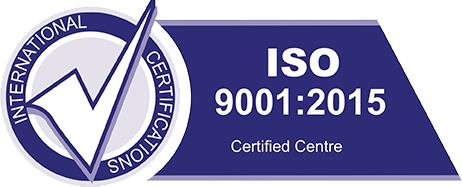What is a laparoscopy?
Laparoscopy is a ‘keyhole’ procedure, which allows detailed inspection of the pelvic organs (womb/ uterus, ovaries and fallopian tubes).
Indications for Laparoscopy:
A laparoscopy is often recommended to fertility patients as it is the most reliable way to check the health of the pelvic organs in preparation for pregnancy. Fertility patients will also have their tubes checked with a dye test to make sure the tubes are open and healthy.
It is also offered to women who are troubled with pelvic pain of unknown cause, to treat ovarian cysts, endometriosis and various tubal surgeries.
How is laparoscopy done?
- A laparoscopy takes between 20 and 40 minutes
- The laparoscope is a telescopic camera which is inserted just below the belly button (umbilicus) through a cut that is about 1cm.
- Further 2 or 3 incisions are made lower down in the abdomen (tummy) about 0.5 - 1cm, through which the additional instruments can be inserted in order to enable careful visualisation of the pelvic organs.
- The tummy cavity is inflated with carbon dioxide gas in order to be able to have space in the tummy cavity to move the instruments during the laparoscopic procedure.
- How can laparoscopy be used?
Removing Adhesions
Adhesions are like sticky spider webs that can cause the ovaries, fallopian tubes and womb to be stick together. These may result from endometriosis or infection and cause pain and subfertility.
Adhesions can be divided using laparoscopic surgery but they do have a tendency to reform. To prevent this special type of fluids that can be left within the tummy cavity hoping to reduce the risk of re-scarring.
Treatment of Endometriosis
Endometriosis is a condition where small amounts of the endometrium (lining of the womb) spill backwards through the fallopian tubes and can settle in the pelvic cavity, usually around the ovaries and womb to form cysts and severe scarring to distort the normal tubo-ovarian relationships. Laparoscopy can be used to restore normal anatomy in such patients and also for cyst removal.
Ovarian cyst
These are usually detected by ultrasound scan prior to laparoscopy. Cysts that do not disappear sometimes need a closer look and removal. ovarian cysts can often be removed with keyhole surgery but sometimes a laparotomy (bigger cut) is needed. Your consultant will discuss whether this is likely for you. The usual aim is to remove a cyst and preserve normal ovary.
Laparoscopic ovarian drilling is a procedure, whereby holes are burnt in ovaries in PCOS patients to induce ovulation without using medications.
Ectopic pregnancy
An ectopic pregnancy occurs when a pregnancy fails to develop within the womb but develops outside the womb, most commonly within the fallopian tube. This may require surgery to either remove the pregnancy from the fallopian tube or remove the entire fallopian tube
Tubal surgery
If the tubes have been damaged by past infection or endometriosis, then laparoscopic surgery can sometimes help to open up the fallopian tubes and try and improve the situation. Open fallopian tubes are not necessarily tubes that will function normally and there is an increased risk of ectopic pregnancy with future pregnancies.
Sometimes the far end of the tube might get blocked forming a fluid-filled tube(hydrosalpinx), which not only prevents pregnancy but is also detrimental to any developing pregnancy as the toxic fluid from the tube spills inside the womb to cause much harm to the developing embryo. Before embryo transfer, this dilated and fluid-filled tube is recommended to be removed via way of keyhole surgery to optimize the success of IVF cycle.
Laparoscopic sterilisation
A laparoscopy may be performed in order to achieve sterilisation or blocking of the fallopian tubes.
Post-operative care for Laparoscopy
The gas is let out of the tummy cavity at the end of the operation. It is common for a small amount of gas to remain and for the tummy to feel bloated and distended for a few days. Sometimes, in addition, a small amount of fluid is left within the tummy cavity, which is thought to help with the healing process and to prevent adhesions/scar formation within the tummy cavity, will also result in a feeling of bloating for a few days.
It is common also to feel discomfort in the shoulder tips for a day or two after the operation due to the CO2 gas irritating the nerve endings. The small cuts on the skin are usually closed with dissolving sutures, which take 2 to 3 weeks to dissolve.
Laparoscopy Advantages:
- Early recovery
- Early ambulation
- Less pain
- Better cosmesis
- Less hospital stay
What are the risks of a diagnostic laparoscopy?
All surgical procedures have risks but these are relatively minor in this routine diagnostic procedure.
- Bleeding and blood transfusion: The risk of very heavy bleeding is very low. Bleeding can usually be managed with keyhole surgery techniques but rarely (less than 1 in 100 operations) the operation needs to be extended into a larger incision called a laparotomy to be able to stop the bleeding from becoming dangerous. The transfusion of blood is not commonly needed but it will be done if necessary to top up heavy blood loss.
- Infection does sometimes happen in the skin wounds as they are trying to heal afterwards. It is important to keep the wounds clean and follow your aftercare instructions.
- Damage to nearby structures The pelvic organs (bladder, womb, tubes, ovaries and intestines) are all close to each other in the surgical area. The ureter is the tube that connects the kidneys to the bladder. All these structures are vulnerable to damage as a result of surgery close to them. These complications are not common but they can be serious if they do occur. Damage to the bowel (small pin-prick or tear) can lead to infection as the contents leak out. The chance of this complication is lower than 1 in 2000 operations. Sometimes it is obvious and can be fixed at the time but sometimes it is hidden and does not cause problems until a couple of days after the surgery. If you do not feel much better or if you have pain and temperature (sweats and shivers) by the third day after your operation you should contact the ward and attend for a check-up.
- Blood clots (deep vein thrombosis, pulmonary embolus): Blood clots in the deep veins of the legs can happen when you are lying or sitting still for a long time. Most diagnostic laparoscopy operations are short (45-90 minutes) and the risk of clots is low. People who smoke and / or are overweight and / or are taking oestrogen hormones are more at risk. Hydration is important and you should keep drinking plenty of water even if you do not feel like eating much in the day or so after your operation. Early ambulation is also preventive.
- General anaesthetic: The risk of serious problems with general anaesthetics is low in younger women. Allergic reactions are rare and can be managed.
- Failed Entry: Very rarely due to inability to manoeuvre the instruments inside the tummy at a safe place, C02 insufflation is not possible, leading to the abandonment of procedure or conversion to an open procedure with consent.
Tags: Infertility treatment


